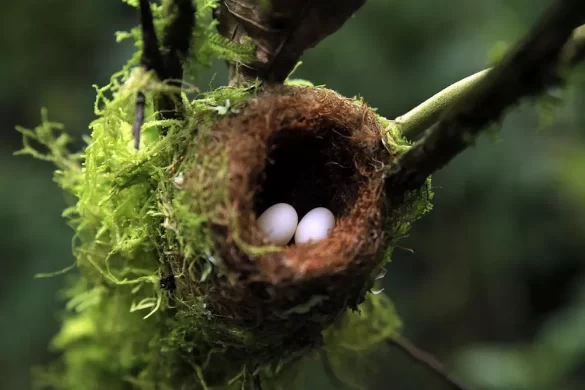Hummingbirds, known for their vibrant plumage and astonishing aerial acrobatics, never cease to captivate nature enthusiasts. While their colorful feathers are widely admired, hummingbird eggs remain a lesser-known marvel. In this article, we delve into the world of hummingbird reproduction to uncover the intriguing range of colors exhibited by these tiny avian gems.
Hummingbird Eggs: A Closer Look
Hummingbirds, members of the family Trochilidae, are renowned for their remarkable ability to lay incredibly small eggs relative to their body size. Typically measuring around 0.5 to 0.8 inches (1.2 to 2 centimeters) in length, these eggs are an intricately designed incubation vessel for the future generation of hummingbirds.
Hummingbird Eggs: Variety of Colors
Hummingbird eggs display a diverse array of colors, encompassing shades ranging from pure white to pale blue and green. However, the specific hue can vary depending on the species of hummingbird and various environmental factors.
White and Off-White Eggs:
White or off-white eggs are relatively common among hummingbirds. These light-colored eggs can often be found in species like the Ruby-throated Hummingbird (Archilochus colubris) and the Black-chinned Hummingbird (Archilochus alexandri). The white or off-white coloration serves multiple purposes, including effective camouflage and the ability to reflect sunlight, keeping the eggs cooler in warm climates.
Pale Blue and Green Eggs:
In addition to white eggs, certain species of hummingbirds lay eggs with a pale blue or green tint. The Allen’s Hummingbird (Selasphorus sasin) and the Broad-tailed Hummingbird (Selasphorus platycercus) are known to produce eggs in these captivating shades. The blue or green coloration arises from pigments deposited in the shell during the egg-laying process, resulting in visually striking eggs that blend harmoniously with the hummingbirds’ natural surroundings.
Camouflage and Protection:
The coloration of hummingbird eggs serves as a defense mechanism, providing camouflage against potential predators. Hummingbirds, like many other birds, are vulnerable during the incubation period. The subdued colors of their eggs help conceal them from predators such as snakes, squirrels, and other birds that may prey on the eggs.
Species Variation:
It’s important to note that not all hummingbird species produce colored eggs. Some species, like the Anna’s Hummingbird (Calypte anna), lay white eggs exclusively. On the other hand, the Costa’s Hummingbird (Calypte costae) produces eggs with a pinkish hue, adding another fascinating dimension to the diversity of hummingbird egg colors.
Conclusion:
Hummingbird eggs, though often overshadowed by the splendor of their feathered counterparts, are an awe-inspiring aspect of avian reproduction. Ranging from white and off-white to pale blue and green, the colors of hummingbird eggs serve vital purposes such as camouflage and protection against predators. The fascinating variety of hues across different species highlights the intricate and diverse nature of these captivating birds.
Appreciating the colors of hummingbird eggs allows us to gain a deeper understanding of the evolutionary adaptations and ecological dynamics at play. As we marvel at the beauty of hummingbirds in our gardens and natural habitats, let us not forget to appreciate the delicate and remarkable creations they leave behind—their extraordinary eggs.


 Facebook
Facebook  Instagram
Instagram  Youtube
Youtube 